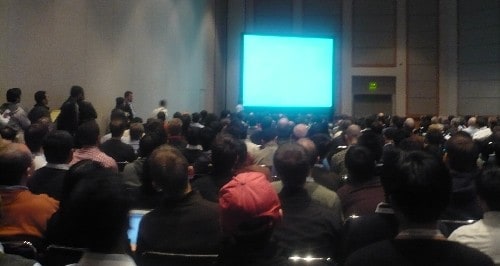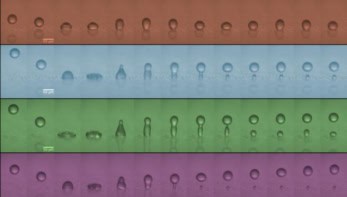
Packed house for Andre Geim
By Hamish Johnston in Portland, Oregon
I had to push my way through the crowd here at the APS March Meeting just to stand at the back of Andre Geim’s talk called “Graphene update”. It seems that there is a still a lot of interest in the wonder material – sheets of carbon just one atom thick – that promises to revolutionize electronics.
The University of Manchester-based graphene guru spoke about a half-dozen or so open questions in the field.
Is graphene ferromagnetic at room temperature, as some have claimed?
“No,” says Geim, who explained how he and his colleagues found no evidence for ferromagnetism down to a chilly 2K.
And what about the vexing question of how to create a bandgap in gapless graphene so that it can be used to create conventional semiconductor devices?
Straining graphene by up to 10% hasn’t worked – and recent calculations suggest that you would have to have to strain the stuff by as much as 25% before a gap appears.
One way forward, according to Geim, is to somehow apply just the right amount of “non-uniform” strain to the material. While this appears to work in theory, it requires the strain to vary on length scales of about a micron – which physicists can’t do today.
A gap could also be introduced by altering the chemistry of graphene. Geim and colleagues have already hydrogenated graphene to create graphane – which has a gap. However, Geim says the material is “unstable” and not suitable for making semiconductor devices.
So if hydrogen doesn’t work, why not try fluorine to create fluorographene? That’s what Geim and colleagues have done – and although the result was a semiconductor with a great deal of disorder, he said that fluorographene could be the way forward to a gap.
Perhaps the most intriguing topic touched on by Geim is the fabrication of “quantum capacitors”, which comprise one graphene plate and one metal plate. In such a device the capacitance is a function of the applied voltage, dipping to zero at zero voltage. And the capacitance oscillates if a magnetic field is applied. I’m not sure what you could do with such a device – but it’s yet another example of the wonders of graphene.



